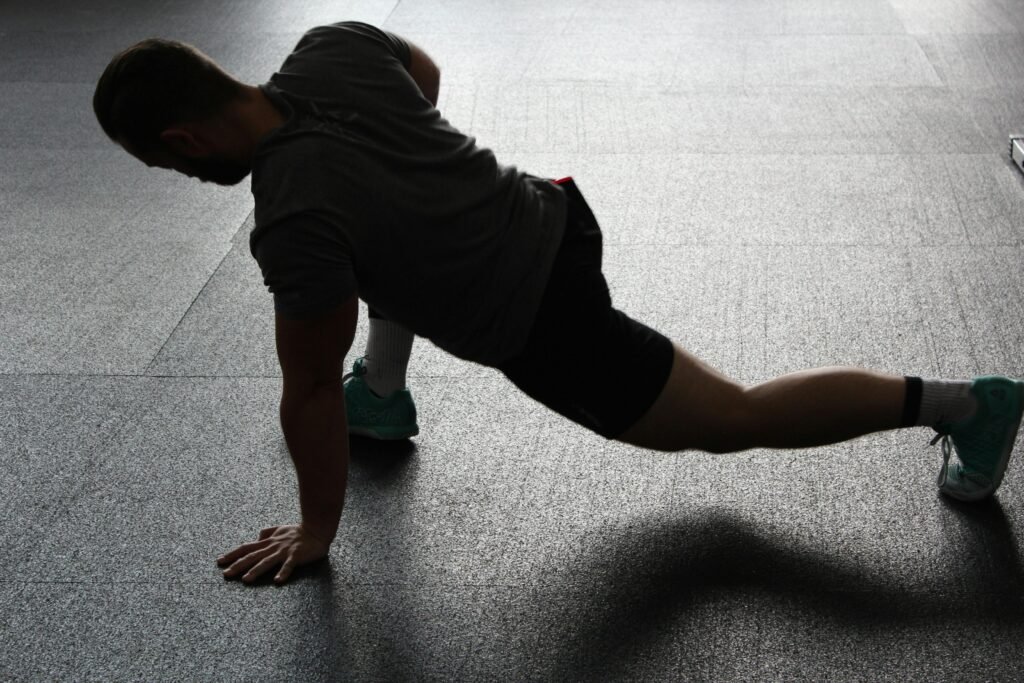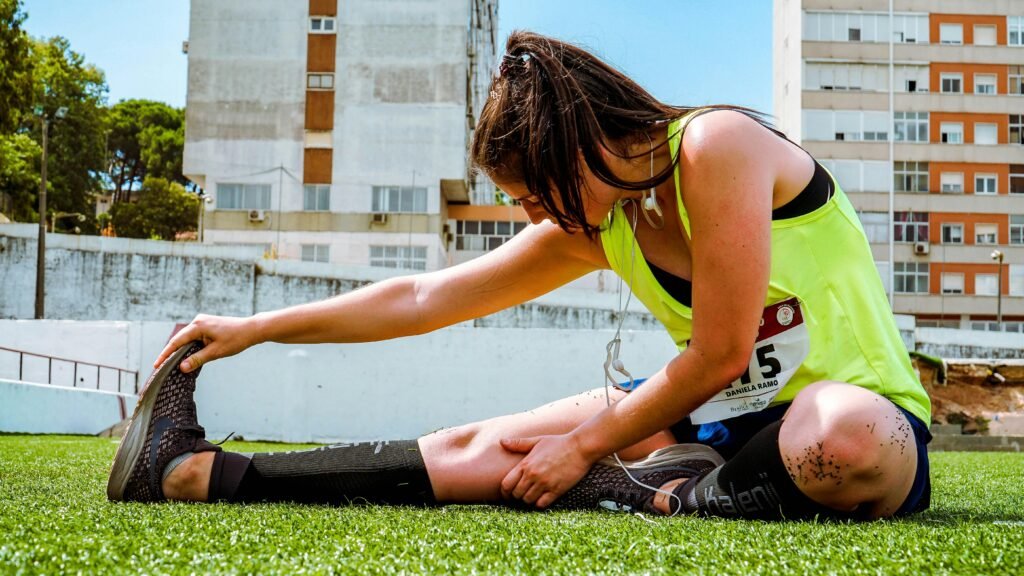Starting a run without proper preparation is like jumping into a swimming pool without checking the water temperature. Stretching before running is an essential part of your routine that can enhance performance, prevent injuries, and improve overall flexibility. Here’s why stretching should be a non-negotiable part of your pre-run ritual.

1. Enhances Flexibility and Range of Motion
Dynamic stretching, which involves moving parts of your body through a full range of motion, helps to increase flexibility. When muscles are more flexible, they can move more freely and efficiently, leading to better running form and performance. This increased range of motion also helps in tackling different terrains and obstacles with ease.
Examples of Dynamic Stretches:
- Leg Swings: Swing one leg forward and backward, gradually increasing the range of motion.
- Arm Circles: Make large circles with your arms, first forward and then backward.
- High Knees: Lift your knees high towards your chest in a marching motion.
2. Increases Blood Flow and Oxygen to Muscles
Stretching helps to increase blood flow to the muscles that you’ll be using during your run. This enhanced circulation brings more oxygen and nutrients to your muscles, preparing them for the physical exertion ahead. Improved blood flow can also help to reduce muscle stiffness and soreness, allowing for a smoother and more comfortable run.
Effective Stretches for Blood Flow:
- Walking Lunges: Step forward with one leg and lower your hips until both knees are bent at about a 90-degree angle.
- Butt Kicks: Jog in place while kicking your heels up towards your glutes.
- Dynamic Quad Stretch: Pull your heel towards your glutes while walking, alternating legs.
3. Reduces Risk of Injury
Stretching before running can significantly reduce the risk of common running injuries such as strains, sprains, and muscle tears. Dynamic stretches help to warm up the muscles and tendons, making them more pliable and less prone to injury. This preparation is particularly important for runners who are pushing their limits or running on uneven surfaces.
Key Stretches for Injury Prevention:
- Hip Circles: Stand on one leg and make circles with your other leg, engaging your hip muscles.
- Ankle Bounces: Stand on your toes and bounce lightly to warm up your ankles and calves.
- Torso Twists: Rotate your torso from side to side to warm up your core and lower back.

4. Prepares the Mind and Body
Stretching isn’t just about the physical benefits; it also helps to prepare your mind for the run ahead. Taking a few minutes to stretch can serve as a mental transition from your previous activity to your run. This mental preparation can enhance focus and concentration, leading to a more enjoyable and effective workout.
Mental Preparation Techniques:
- Deep Breathing: Incorporate deep, rhythmic breathing with your stretches to calm your mind.
- Mindfulness: Focus on the sensation of each stretch and how your body feels.
- Visualization: Imagine your run, visualizing yourself moving smoothly and effortlessly.
5. Improves Muscle Coordination and Balance
Dynamic stretching can improve muscle coordination and balance, which are crucial for maintaining good running form. When your muscles are properly warmed up, they can work together more effectively, reducing the likelihood of awkward movements that could lead to falls or injuries.
Coordination and Balance Stretches:
- Single-Leg Deadlift: Stand on one leg, hinge at the hips, and reach towards the ground with your opposite hand.
- Side Leg Swings: Swing one leg out to the side and back across your body.
- Knee Hugs: Pull one knee towards your chest, then switch to the other leg while balancing on one foot.

👉Some Forms Of Leg Stretching🦵
Proper leg stretching is crucial for runners to maintain flexibility, prevent injuries, and enhance performance. Here are some effective leg stretches that you can incorporate into your routine, either before or after your run.
1. Quadriceps Stretch
How to do it:
- Stand tall and keep your feet hip-width apart.
- Bend your right knee and bring your heel towards your buttocks.
- Grab your right ankle with your right hand and gently pull it closer to your buttocks.
- Keep your knees close together and avoid arching your back.
- Hold the stretch for 20-30 seconds, then switch to the left leg.
2. Hamstring Stretch
How to do it:
- Sit on the ground with your right leg extended straight in front of you and your left leg bent, with the sole of your left foot against your right inner thigh.
- Reach forward with both hands towards your right foot, keeping your back straight.
- Go as far as you can without straining, feeling a gentle stretch in your hamstring.
- Hold the stretch for 20-30 seconds, then switch to the other leg.
3. Calf Stretch
How to do it:
- Stand facing a wall with your hands placed on the wall at shoulder height.
- Step back with your right leg, keeping it straight, and bend your left knee slightly.
- Press your right heel into the ground to feel a stretch in your calf.
- Hold the stretch for 20-30 seconds, then switch to the left leg.
4. Hip Flexor Stretch
How to do it:
- Kneel on your right knee with your left foot in front, forming a 90-degree angle with your knee.
- Shift your weight forward slightly, keeping your back straight and your hips square.
- You should feel a stretch in your right hip flexor.
- Hold for 20-30 seconds, then switch to the other side.
5. Butterfly Stretch
How to do it:
- Sit on the ground with your feet together and your knees bent out to the sides.
- Hold your feet with your hands and gently press your knees towards the ground with your elbows.
- Keep your back straight and lean forward slightly to deepen the stretch.
- Hold for 20-30 seconds.
6. IT Band Stretch
How to do it:
- Stand upright and cross your right leg behind your left leg.
- Lean to the left side, reaching your right arm overhead and feeling the stretch along your right IT band.
- Hold for 20-30 seconds, then switch to the other side.
7. Figure Four Stretch
How to do it:
- Lie on your back with your knees bent and feet flat on the ground.
- Cross your right ankle over your left thigh, forming a figure four shape.
- Grab the back of your left thigh and gently pull it towards your chest, feeling the stretch in your right glute.
- Hold for 20-30 seconds, then switch sides.
Tips for Effective Stretching
- Warm up first: Always warm up your muscles with a light jog or dynamic stretches before performing static stretches.
- Breathe deeply: Focus on deep, steady breaths to help relax your muscles and deepen the stretch.
- Avoid bouncing: Perform each stretch in a slow and controlled manner to prevent injury.
- Listen to your body: Stretch to the point of mild discomfort but never pain. Each person’s flexibility level is different, so don’t force a stretch.
Conclusion
Incorporating stretching into your pre-run routine is crucial for optimizing your performance and minimizing the risk of injury. Dynamic stretches enhance flexibility, increase blood flow, and prepare your muscles and mindHow Exercise Improves Mental Health for the physical activity ahead. By dedicating just a few minutes to stretching before you run, you set yourself up for a more effective, enjoyable, and safe running experience.
So next time you lace up your running shoes, remember to give your body the preparation it deserves. Your muscles will thank you, and your runs will be all the better for it!




Pingback: How to Do Leg Workouts at Home - Fat Burn Faster 2x
Pingback: The Common Mistakes People Make During Strength Workouts - Fat Burn Faster 2x
Pingback: Full Body Strength Workout at Home - Fat Burn Faster 2x